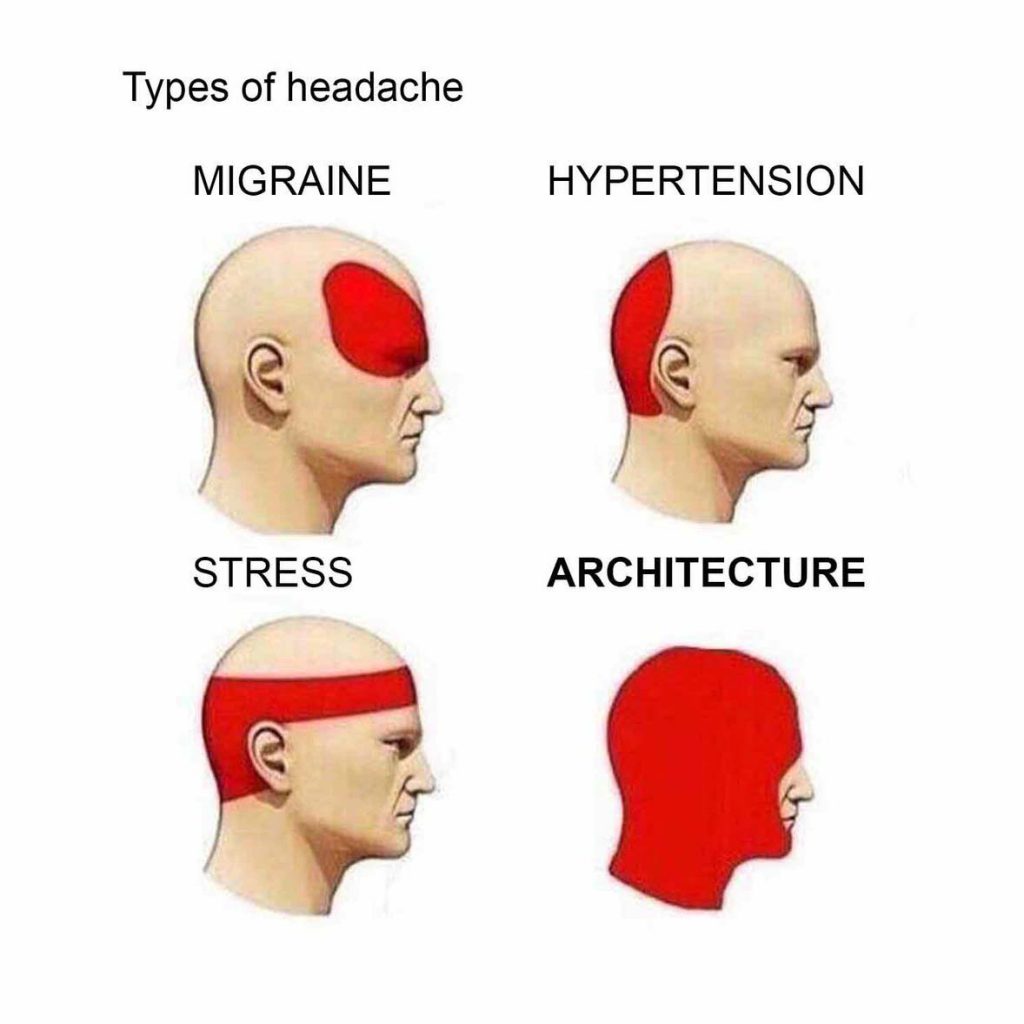What do you Meme?
A Meme is a humorous image, video, piece of text, etc., that is copied (often with slight variations) and spread rapidly by online users. They have taken over the internet! We all have seen them and likely sent them a time or two. Have you seen the ones about Architecture? We get a few good laughs in ourselves. Especially the ones about architecture school! Go ahead and Google away “Architecture school memes”. With some of the memes out there, it makes you wonder, if people really know what Architects do or what it takes to be one? You’re about to find out in an 800 word or less blog post!
Architecture School – In order to become a licensed Architect, you must have a professional degree from an accredited university. There are two more traditional paths to achieve this. Path (1): A 4-year Bachelor of Science (or Arts) in Architecture, plus a 2-year Master of Architecture. Path (2): A 5-year Bachelor of Architecture. How you get there can vary. Some may start at a 2-year school then transfer. But, as long as you have a Master of Architecture or Bachelor of Architecture in the end, you are on your way. At PCA we have a diverse group that come from schools like Catholic University, Morgan State, SCAD, Syracuse, UMD, Virginia Tech and a few more.

Intern Years – NCARB is the National Council of Architecture Registration Boards. If you want licensure, you must go through them and their requirements. One of the requirements is “Architecture Experience” hours. Or simply put, intern hours. Now, don’t confuse an Architectural Intern with a college or high school intern that is working for the summer, etc. An architectural Intern is a college educated individual with a professional degree. Some would say they are an entry level architect. Typically, the intern hours work out to be approximately 3 ½ years. But you’re not done yet. It’s a process!
Licensing Exams – The Architecture Registration Examination (ARE) is a grueling series of exams that an individual must go through as their final steps to achieve licensure. Over the years, it has morphed into what it is today. When Cathy Purple Cherry took her licensing exam, she took 8 exams over 4 consecutive 12-hour days. For Alan Cook, it was 9 exams that could be taken in any order. Then it was reduced to 7 exams, and more recently 6. Now, you don’t have forever to take them. NCARB issues you a rolling 5-year clock. All must be completed and passed in that time or they start dropping away and you have to start retaking them. Once you pass them, all that is left is the paperwork to licensure!
One of the plus sides to the steps towards licensure is that certain jurisdictions allow these steps to overlap, so be sure to check! For instance, you could start earning your intern hours once you are a junior at a university, and you can take your exams while you are completing your intern hours. However, they all have to be completed to get licensed. So if you pass your exams before your experience hours are done, you have to still complete the hours.
People will choose all sorts of architecture to practice. Everything from government work to commercial to residential and even nonprofit. At PCA, you know it’s primarily residential with some Purposeful (non-profit/special needs) and small scale commercial sprinkled in.
At PCA, we believe in giving our staff various professional opportunities. Everyone does a little bit of everything. If you are fresh out of school, we don’t limit you to only doing one task. We challenge you to do more. As your experience grows, you will begin coordinating with the consultants, sitting in client meetings, running your own projects and before you know it, you will be the senior level designer that helps manage younger staff and get into the intricacies of shops drawings, building construction, etc.
PCA works as a team! There are younger staff members and more senior staff members on all projects. This helps keep the cost down for our clients too! If you have ever been in a PCA office, you will notice it’s an open studio environment. This is done intentionally so no one works in silos. This connectivity promotes even more learning. We also take advantage of this strategy with our interiors department. Having our interior designers share the studio allows for an even more cohesive design and integration in terms of furniture, fixtures, finishes, treatments, etc. from the early stages of planning.

Okay, so we’re a little over 800 words. And while people always enjoy a good laugh from the memes, now you know a little bit about the true process behind the Architecture. Don’t believe everything that’s meme’d!
Written by Ashley Marshall, project manager at PCA
